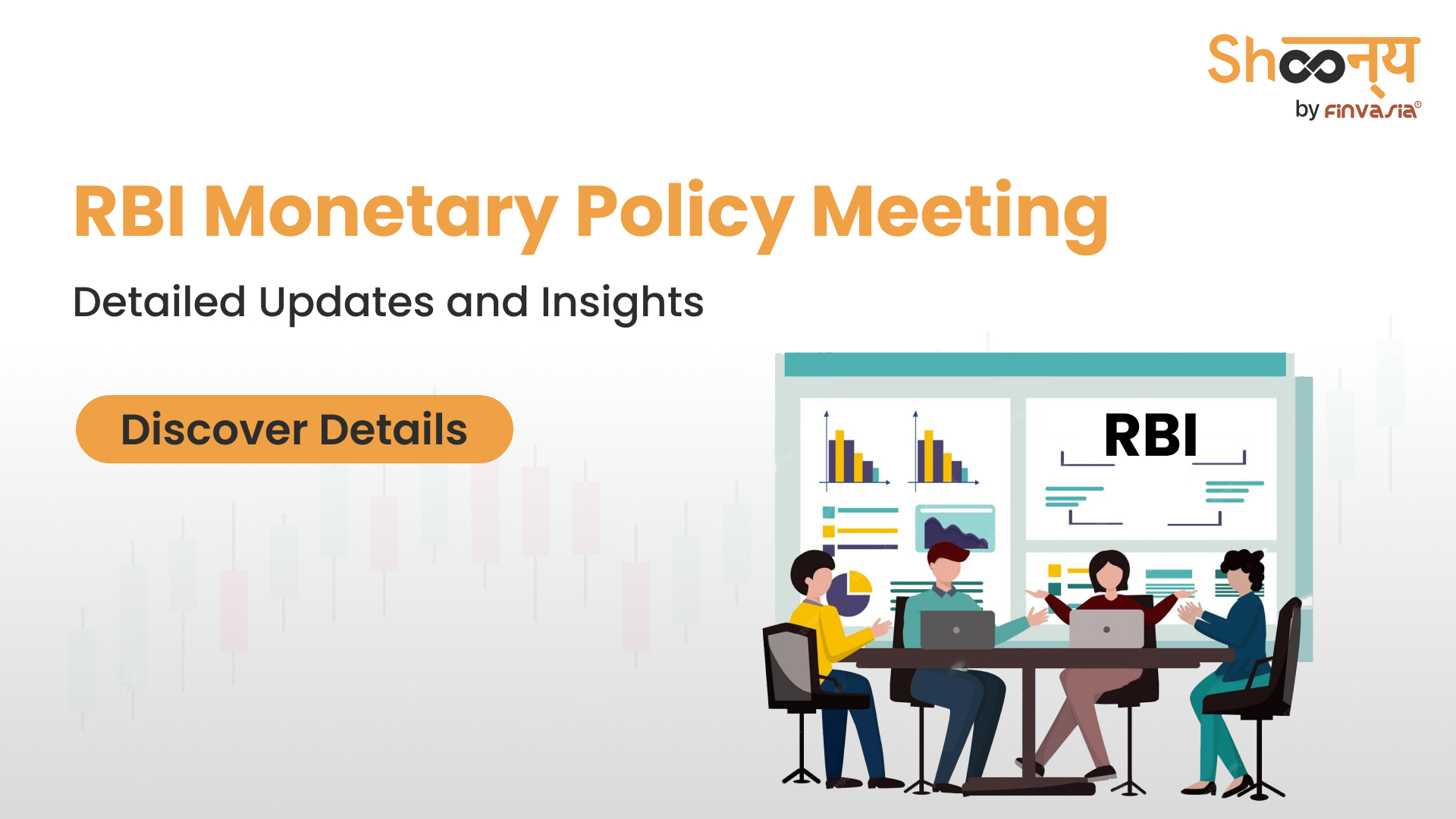RBI Monetary Policy Meeting: Key Updates and Insights

The RBI Monetary Policy Meeting is happening today and it is the 10th time in a row that the central bank kept the RBI repo rate unchanged. At the beginning of the meeting, RBI Governor Shaktikanta Das announced that they are keeping the interest rate unchanged this time as well. Apart from repo rate, inflation, and interest rates, gdp growth is one of the crucial points being discussed in today’s meeting.
RBI’s Stance in MPC
While the central bank kept the rates unchanged it changed its stance on the same to ‘neutral’, which was earlier, ‘withdrawal of accommodation and this decision has been made unanimously. Mr. Das commented before the meeting that they unanimously found it correct to change the stance and continue to focus on bringing down the inflation level within the target set by RBI before taking further steps.
He also commented that the Flexible Inflation Targeting Framework, which has been implemented for the past eight years, has been giving positive results and matured over these years, across monetary policies and interest rate cycles.
RBI also kept the Marginal Standing Facility (MSF) unchanged at 6.75% and retained the Standing Deposit Facility (SDF) at 6.25%.
Growth Prospects and Estimates
RBI keeps its annual GDP growth rate unchanged as well at 7.2% as rural demand is surging, while urban consumption remains stable and private investments rising. However, it reduced the estimate for Q2FY25 to 7% from the previous estimate of 7.2%. For the upcoming quarters, that are Q3FY25, Q4FY25, and Q1FY26, the central bank revised the growth estimates higher. In Q1FY25 the GDP growth was lower than what was projected in April 2024. The final growth rate was 6.7% while it was projected back in April, as 7.1%.
| Tenure | GDP Current Estimates (%) | GDP Previous Estimates (%) |
| Q2FY25 | 7 | 7.2 |
| Q3FY25 | 7.4 | 7.3 |
| Q4FY25 | 7.4 | 7.2 |
| Q1FY26 | 7.3 | 7.2 |
| FY25 | 7.2 | 7.2 |
Demand Analysis
Urban Demand
The high-frequency indicators of urban demand are
- Domestic air passenger traffic
- Passenger vehicle sales
- Consumer durables
- Household credit
Showing positive signs and surging upward. For instance, the domestic air passenger traffic has been the highest since the beginning of this year compared to the previous five years. Similarly, passenger vehicle sales were high during the beginning of the year, went down a bit during April, and May, then again picked up in June, and are now about to surpass 2023 levels as well.
That said, the demand for consumer durables is a little inconsistent as it has been fluctuating since the start of the year. Coming to household credit, the credit and outstanding has been mainly in demand, but slowing down since the start of this fiscal. The vehicle loans and personal loans have been steady through this time.
Rural Demand
The high-frequency indicators of rural demand are
- Tractor sales
- Motorcycles sales
- Consumer non-durables
- Fertilisers sales
Showing growth as motorcycle sales picked up in July while fertilizer sales picked up since April and it is going up significantly, consumer non-durables demand showing signs of growth after falling since April end. The only indicator that is tractor sales have been falling steeply over the past few months.
Investment Demand
The investment demand also showing signs of robust growth as the import of capital goods steadily going up the ladder over the last 6 months since April 2024. On the other hand, IIP Capital Goods increased steeply since April, however, cement production which is also a major indicator of investment demand has become sluggish in the last quarter.
Inflation Rate and Estimates
The inflation estimates also remain unchanged at 4.5% and Mr. Das said that the September 2024 inflation data might go up due to the base effect. He also commented that the risk of inflation rate increasing has a lot to do with the current geopolitical situation, weather conditions, and increase in commodity prices. Here are estimates –
| Tenure | CPI Current Estimates (%) | CPI Previous Estimates (%) |
| Q2FY25 | 4.1 | 4.4 |
| Q3FY25 | 4.8 | 4.7 |
| Q4FY25 | 4.2 | 4.3 |
| Q1FY26 | 4.3 | 4.4 |
| FY25 | 4.5 | 4.5 |
During this fiscal, food inflation though lower than last year, was at a whopping 8% during the April-June quarter. Then in July, it dropped to 5.1% but in August it again spiked a bit to 5.3%. The extreme weather conditions hit the supply which in turn has made the food prices soar.
Fiscal Condition
In Q1FY25 the balance of payments widened nominally to 1.1% of GDP on a YoY basis, which has been mainly driven by the merchandise trade deficit. Coming to the net FDI and FPI, in Q1FY25 the FDI went up to above $5 billion but in Q2FY25, net FDI was negative. On the other hand, FPI went up drastically in Q2FY25 compared to Q1 level.
Sectoral Real Gross Value Added
In Q1FY25, real GVA by agricultural, forestry, and fishing sectors increased by 2%, then overall industry value addition increased by 7.4%, electricity, gas, water, and other utilities mainly added to this industry value increase. The service sector growth in value addition was 7.7% in Q1FY25.
Words of Caution
RBI Governor also shared his concern about the NBFCs, which are pursuing growth prospects aggressively with a solid risk management plan in place or sustainable business practices. For instance, MFIs and HFCs are after extreme returns, which is a cause of concern as the interest rate charged by them is extortionate.
Source: CNBC TV18
______________________________________________________________________________________
Disclaimer: Investments in the securities market are subject to market risks; read all the related documents carefully before investing.








